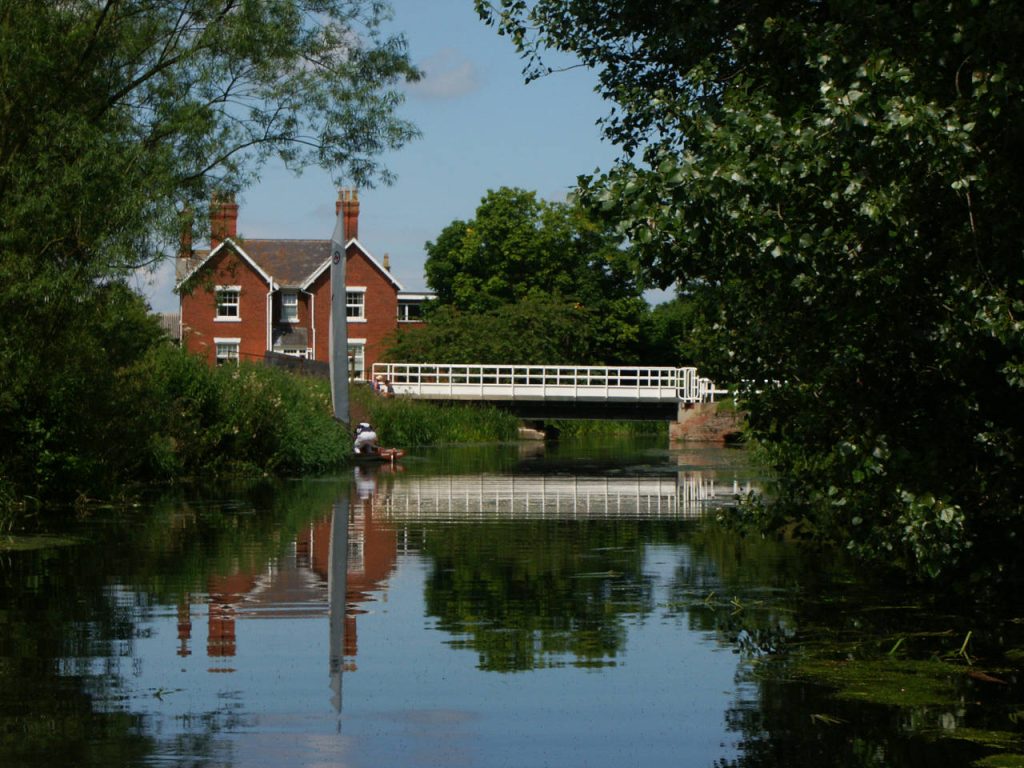Timeline of the Driffield Navigation

● 1760s: Small boats were able to navigate the River Hull as far as Fisholme.
● 1765: Merchants in Driffield and Kilham consulted with canal engineer John Smeaton for advice on making the river navigable to Driffield by keels.
● December 1766: John Grundy suggested making a cut from Fisholme to Driffield, including a basin in Driffield and making the Frodingham Beck navigable to the bridge at Frodingham.

A map of the River Hull and the proposed cut.
● May 1767: The River Hull and Frodingham Beck Navigation Act 1766 was granted, authorising the construction of a canal to Driffield.

● October 1767: James Pinkerton and James Dyson were appointed to construct the canal.
● 12 December 1768: The first section of the canal opened.
● 25 May 1769: The canal opened as far as Wansford.
● 25 May 1770: The entire canal, with a length of 5.75 miles (9.25 km) from Emmotland to Driffield, was formally opened. The initial canal included four locks, each built to accommodate Humber Keels up to 61 feet (18.6 m) long and 14.5 feet (4.4 m) wide.

● 1776: Snakeholme Lock was converted into a two-lock staircase.
● 1783: The first dredging of the River Hull between Emmotland and Aike Beck was recorded. Dredging subsequently became a prominent cost for the navigation commissioners.
● 1790s: A period of prosperity for the navigation began, as trade increased.
● 1801: The Hull and Frodingham Beck Navigation Act 1801 was granted, authorising the replacement of Hull Bridge with a larger structure.
● 1804: The new Hull Bridge was operational.
● 1805: A new cut, 0.75 miles (1.2 km) long, was completed between Bethells Bridge and Struncheon Hill Lock.

● 1811: Works on the navigation to Corps Landing, which did not include an authorised new cut, were finished.
● 1817: A steam packet service began operating between Driffield and Hull.
● 1826: A new warehouse was completed in Driffield.

● 1846: A railway station opened in Driffield.
● 1882: The old and new navigations were fully amalgamated.
● 1885: The Hull and Barnsley Railway Bridge was constructed in Hull.
● 1898: The commissioners purchased a steam dredger to help maintain the channel.
● 1928: The Brigham Sailing Club founded

● 1930s: Trade on the navigation declined and profits fell.
● 16 March 1945: The last commercially used craft, the keel Caroline, reached Driffield carrying 50 tons of wheat.

● December 1951: The Ousefleet made the final commercial delivery on the navigation, bringing coal to Frodingham Wharf.
● 1955: The swing bridge at Whinhill was fixed in place.
● 1967: The swing bridge at Wansford was replaced with a fixed bridge.

● 1968: The Driffield Navigation Amenities Association (DNAA) was formed to restore the navigation.
● Easter 1977: Navigation to the lower reaches of the canal was restored after the renovation of Bethells Bridge.

● 1978: Restoration work by the DNAA and Driffield Navigation Trust began.
● 1982: The bottom gates of Struncheon Hill Lock were replaced with steel ones by the DNAA.

● 1996: Town Lock was restored by volunteers and fundraisers.
● 2003: Brigham Swing Bridge was restored to full operation, and Snakeholme Lock was reopened to navigation.

● 2005: Whinhill Lock was restored and opened to navigation, but a new fixed bridge limited its use to boats less than 15 feet (5 m) long.

● 30 May 2009: Wansford Lock was recommissioned after restoration work.

● 2010s onwards: The Driffield Navigation Trust continues to work towards making the entire navigation fully navigable, with the replacement of the fixed bridge at Wansford a major goal.

2021: Bridges at Snakeholme and Whinhill Lock replaced and heightened.



2024: Pontoon top re-covered at Wansford, and a floating picnic barge placed outside The Trout Inn
